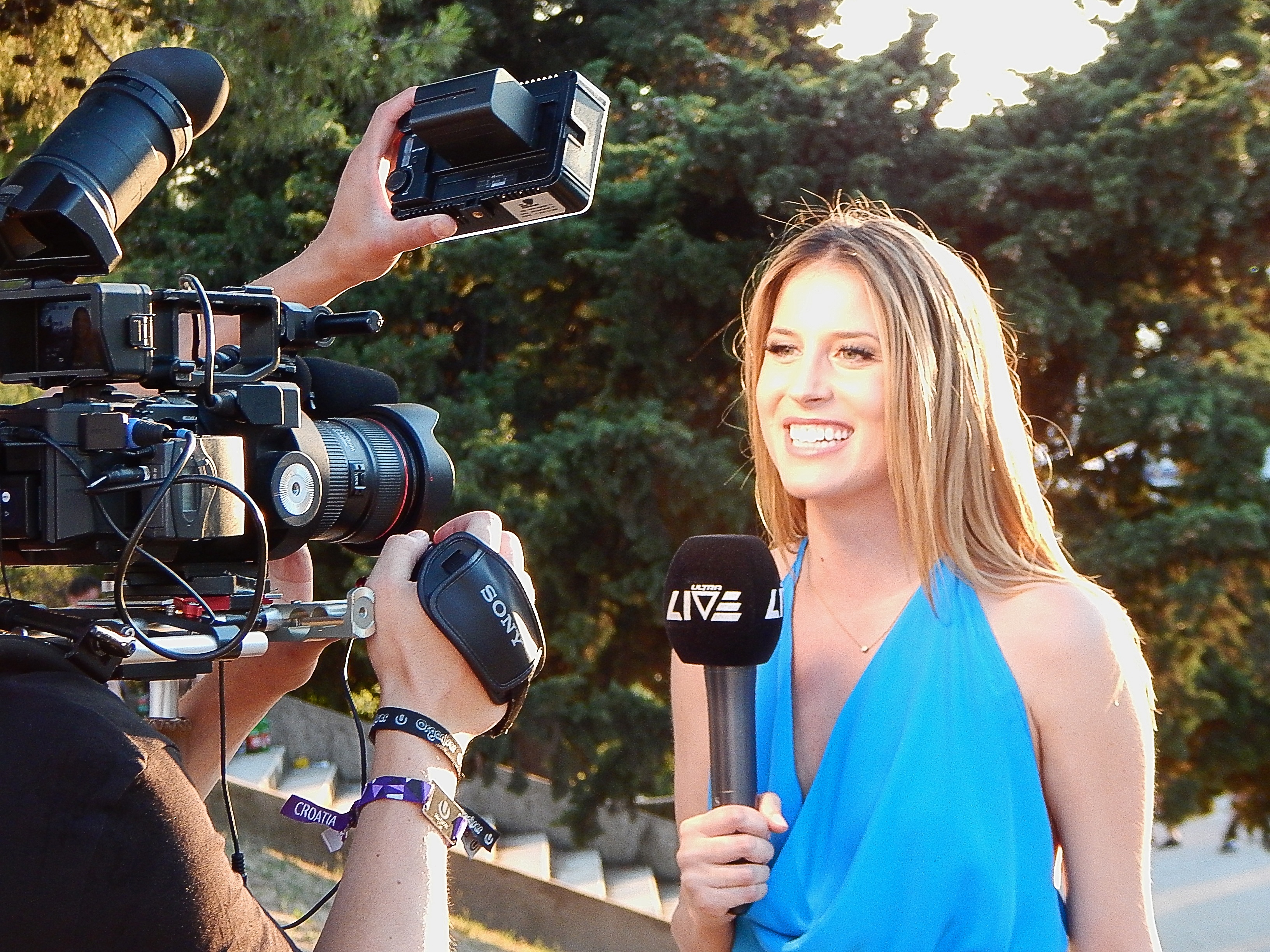Ad
An ad is anything designed at getting people to your offer or website.
This could be anything like a Facebook post, AdWords ad, or banner ad. It could be a solo email ad, a text ad, any kind of ad out there that’s going to get people to your website. So the goal of your ad is to do just that—get people to your site. The ad is the first thing that people see.
When you’re dealing with advertising and marketing online, remember that your goal is to get people to your offer or website, not necessarily to sell. You’re not really trying to sell in your ad, so don’t try to just blatantly sell. We want as many people as possible to come to our site, and then it’s our website’s job to do the selling.
Affiliate
An affiliate is someone selling on behalf of another company.
This is like a salesman, but instead, you’re getting paid from an affiliate company.
The cool thing is that you get something called an affiliate link. This tracks whatever it is you’re selling, so it tracks clicks and sales.
When you’re dealing with affiliate marketing, your job is to get your ad to get people to your website, where you pre-sell affiliate offers.
Why do I say pre-sale? Well, as an affiliate, you’re not really doing the sale, because the order form is not hosted on your site. You can’t really sell it directly. (That would be dropshipping, or selling your own products.) So as an affiliate, we’re selling on behalf of another company.
Now, the cool thing about affiliate marketing is you can get paid per click, per lead, per sale, per trial, per call, or per download.
We can get paid all these different ways as an affiliate marketer. But we have to remember that as an affiliate, we are not directly selling the offer. We have to pre-sell it.
Acquisition cost
Acquisition cost is how much it costs to get a customer.
This is the most important number in marketing. How much does it cost you to get a new customer?
Whether it’s a $1 customer or a $50,000 customer, how much is it costing you to generate that person?
If you’re an affiliate, you can think replace “acquisition” with “lead”. How much does it cost to get a lead or a customer? Because as an affiliate marketer or influencer, the value or money you make is going to be determined by the leads you collect.
The more leads you have, the more you nurture them, the more they get to know, like, and trust your information. The more value it’s going to be.
Now, you can do what’s called click flopping, which is basically setting up a landing page, putting affiliate offers on it, and sending traffic to it. You make money, and don’t really build a mailing list or anything like that.
Click flopping is direct to offers, without any lead capture. So you’re not really capturing a lead, you’re not really building an audience or anything like that.
As a marketer, you need to know your acquisition cost. You need to know how much you’re making for each individual lead or sale. How much is it costing you to get that sale?
Advertorial
An advertorial is an advertisement that is designed to look like content.
This is one that I really like. This is important, and a lot of people miss out on this. This is where advertisements are designed to look like content.
They look like something you want to read. They look like part of the magazine, or part of the website. And then at the end, it might have a little call to action.
As an affiliate marketer, if you don’t learn the skills of advertorials, you’re going to have a hard time making money. Why? Because people go to the internet for content.
Not to read your ads. So our job is to make advertorials and ask ourselves how we can make our ads look like content.
Advocate / Reporter / Reviewer
This is the positioning of who you are and how you’re writing your site.
Who are you when you write your site? You might be an advocate, the guy on behalf of your reader saying that you tested out these products, and here’s what you learned.
Or you might be a reporter, saying you found out some information and inviting people to read a report that you made about it.
Or you might be a reviewer. A lot of times, people just make review sites and make lots of money doing it, because they do it in a cool way. They’re like, “Hey, I’m just trying to help you out.”
This is about your writing and content style.
When you think about this, you have to ask how you are going to help people. How are you going to give them something of value, something that they’re going to want to read?
The goal of your site is to get people to read. If they’re not reading your stuff, if they’re not listening to your videos, if they’re not doing stuff, then it’s not really going to work.
If people come to your site and leave without doing anything, then you are stuck in the water, because they’re not going to consume your content.

Avatar
An avatar is a snapshot of your visitors or ideal customers.
Who is your ideal customer? You have to make a snapshot of them. In the old days, we would do this with an SRDS, which is a standard rates and data service. And this was basically a place where we could buy lists of people who did x.
When it comes to online stuff, we still have to ask ourselves this question.
I’ve found that for my affiliate marketing business, it’s usually someone between the ages of 40 and 60 that’s looking to supplement income.
Now, recently we’ve branched out and we’ve gotten a lot younger crowd, which I like. It’s kid of cool to have a diverse crowd. But once you know your crowd, it’s very important to remember them.
Because 40 to 60-year-olds talk differently than 30 to 40-year-olds, or 20 to 30-year-olds.
You have to build your avatar about who you want.
Direct response marketing is about cutting out the waste. Coca-cola, Ford, Dodge, all these companies waste a shit ton of money on their marketing. They waste so much money it’s not even funny. Now, they can afford to, because they sell a shit ton of stuff.
But you and I can’t afford to do that. We can’t afford to waste money on marketing, we can’t afford to waste clicks, or emails. That’s what direct response marketing is about.
We have to focus on that, and we do that by finding our customer avatar, the people that we want to reach. The people that are going to buy what we have to offer.
Back end
Back end is how much money you make off the lead or sale.
If I sell something at the end of a call, the idea isn’t just to get people to get the offer.
The offer itself might not make me much money, but the idea is for you guys to eventually buy more stuff.
Because I know that once you buy my offer and join me, you’ll love what I have and you’ll want to learn more.
So you have to look at how much you’re going to make off a lead or sale. Then you can use that to figure out how much you want to spend to get that lead or sale.
For example, if I generate 100 mail opt ins, and I sell affiliate offers that can make me $4,000 a year, that means I’m able to make an average of $40 per year, per subscriber.
If you knew you were making $40 per year, per subscriber, how many subscribers would you buy? How much would you spend if you knew you could make $40 per subscriber?
$40 over 12 months would mean you’re making $3.33 per month, per subscriber, so maybe you would spend $20 or so to get a subscriber. In that instance, you know you’d be making a profit.
Benefits vs. features
Benefits tell someone why they should have a product, and features describe what a product has.
We don’t want to sell features, we want to sell benefits. What’s an example of a feature? A car might have a feature of going 0 to 60 miles per hour in 5 seconds.
That’s a feature, but can we translate that into a benefit? The benefit is that the car is going to make you look good, make you look hot. That’s why people by fancy sports cars, because they want to look good in them. They want to impress other people.
People don’t buy sports cars because of the features, but because of the benefits.

So we don’t want to sell features, we want to sell benefits. There are different types of benefits we can focus on: flat, emotional, and practical.
A flat benefit is a benefit with no emotional appeal. An emotional benefit appeals to emotions.
Practical benefits don’t sell as well as emotional ones. They’re more like flat benefits.
You have to appeal to emotions. What makes people think. What keeps people up at night. People buy things based on emotion.
Break even
Break even is the point where you get your money back.
Related to this is the CTO, which is contribution to overhead. This is basically all of your costs, all of your expenses. Then, what you’re left over with is all your profit.
Copy / Copywriting
Copy is what your visitors will read. Copywriting is creating the copy.
Your landing page has words on it, so that’s your landing page copy. Your sales page has words or a video on it, so that’s your sales page copy.
The key to writing good copy is to know your avatar. Know who you’re talking to, and know their hot buttons. Another tip is to be specific.
When it comes to copywriting, there are several parts.
First is the headline, which is what people will read first. The goal of the headline is to get people to read your next sentence.
Then you have the subhead, which is the copy that comes right after the heading. The goal of this is to lead people into the body. The body is the bulk of your copy.
When you write copy, remember that people skim, rather than read, your content. People are skimming your copy. They’re not reading every single part of your copy.
Call to action
A call to action is asking for an action to happen.
It could be asking for a sale, a lead, whatever the action is.
This is the action you’re going to get paid on. If it’s a download, then you’d tell people, “Download this.”
A lot of people waffle it when it comes to call to action. They sell from their heels. But you have to make your call to action really clear and concise. You don’t want to confuse people.
In my case, there is nothing wrong with me doing a webinar where I teach a lot of value, and then tell people to go to my site and sign up to learn more.
If you don’t have a call to action on your site, you’re not going to sell a damn thing.
Close
A close is where you close the sale.
How are you ending your content? This is the wrapping up your marketing. It’s the whole reason your doing your content.
Cold vs. warm
Cold traffic doesn’t know you, and warm traffic does know you.
If you have videos on YouTube and tell people to go to your site, then by the time they get to your site, they’ll already know who you are. That’s warm traffic. If you just put an ad on Google and lead people to your site, then they don’t know who you are, and that’s cold traffic.
Warm traffic is always going to convert better, which is why you make money on your mailing list.
Warm traffic could be from someone else, like if you get an endorsement, or you get an affiliate to promote something.
Control
A control is the starting point of your ad or content.
I might write an ad that says, “Download Free Bible Verses.” Let’s say that control got a 1% CTR (click-through rate). Now what we do is try to make variations to beat the control.
So, I could make a new ad that says, “Free Bible Study Tools.” Maybe that one gets a 3% CTR. If my variation kicks ass and gets 3%, this will become the new control. Now I might try to beat this one too, or maybe I’m just happy with it and I leave it.
On your site, your control would be a landing page or squeeze page. Maybe you test a squeeze page, and you get 10% of the people to opt in.
Then you do a new one, where your squeeze page offers a free report and has a video on it.
Maybe that one gets you a 30% opt in rate. You might make that squeeze page your new control.
Conversion
Conversion is someone doing the action.
So if you’re getting paid on a download, the conversion would be when people actually download your offer.
If you’re paid on a lead, the conversion would be when you get a lead. If you’re paid on a sale, the conversion would be the sale.
Demographic
A demographic is who you have.
This is a lot like your avatar. Your avatar is who you want, but the demographic is who you’re able to get.

Email list
An email list is a list of people who want to hear more.
With your email list, you can follow up on people with other ads and offers.
Guarantee
A guarantee is when you say, “If you get x, you’re going to get y.”
Here’s is my own guarantee: “I guarantee after going through my direct response trainings for just $97, you will learn exactly what you need, so you can write ads that make money, starting today.
Yes, this skill can be used the same day you learn it to profit big time. (My record was $3,000 in 13 minutes using these tactics.)”
I find that the guarantee can be powerful if you use why people are there in the first place.
Information marketing
Information marketing is writing content with the goal of doing something.
For example, the news gives content to convert you to their views.
They don’t want you to think, they just want you to believe what they believe. So they present information and narratives in a way that only shows what you want to see.
Now, you can do this ethically. You don’t have to be like sleezy news outlets. You can do this in a way that helps people.
Integrated Marketing
Integrated Marketing is piggybacking off of other marketing.
This could be providing a free report, and having something in that report where you’re integrating your offer into it. Or may you’re integrating something in someone else’s sales process.
Integrated marketing is really important. You can integrate in all kinds of things, and you could make a lot of money with it.
Landing page
A landing page is the page your visitor lands on.
A landing page could be a sales page, it could be a squeeze page, an opt in page, anything. It just happens to be the page someone lands on.
When I go to Google and go to their main Google search page, that’s a landing page. When I go to Yahoo, that’s their landing page. When I go to Amazon, that’s their landing page.
I can make other landing pages if I want, but the landing page by definition is the page that I’m sending people to from my ad, or my search engine marketing, or whatever it may be.
Limited-time offer

A limited-time offer is an offer that is only available for a limited time.
An example would be an offer that’s only available for the duration of a call. Or it could be a report that’s only available for the next 48 hours. This will often increase the amount of people that signs up for something.
Social proof
Social proof is providing social information about customers in order to encourage conversion.
An example would be to say, “The last people who were on my webinar loved it.”
Or, “The last 100 people that went through my training got this result.”
This is about using the power of other people doing stuff. Because let’s face it: People are like herds. They follow the crowds.
Remember that we don’t use social proof to manipulate people, we use it to help them. But knowing that people think differently in groups versus individuals is important for marketing as well.
Market
A market is the group of people you’re going after.
This is a lot like your demographic. Who are you reaching? Are they retired people? Are they divorced people? Are they married people? Are they people looking to lose weight? Who’s your target market?
Niche market
A niche market is a much more targeted market.
This is different from just a market. A market might be weight loss, but you might not know much about these people, other than the fact that they want to lose weight. It’s pretty generic.
A niche market would be people who want to lose 20 pounds in a week. This is much more specific. It’s not just about the competition. It’s about having the right person. If you don’t have the right person, you’re not going to make any money.
Offer
An offer is what you’re promoting to your customers.
An example of an offer would be getting pizza in 30 minutes or it’s free. Another offer would be taking $100 off a first order or something.
Opt in
An opt in is when someone enters their name and email for more information.
It’s someone opting into your marketing.
Personalization
Personalization is when you can make something more personal.
This could be calling someone by their first name in an email, or providing separate links for offers. Let’s say I have a site and I get people that want to lose weight. I ask them, “Do you want to lose 10 pounds, 30 pounds, or 50 pounds?”
When they click on 10 pounds, I can take them to a special page about losing 10 pounds. When they say 30, I could take them to a special page about losing 30 pounds. And so on and so forth.
Pre-population
Pre-population is having information entered onto a page automatically.
For example, I could have an opt in page where I get someone to opt in successfully.
Then on the next page, I could have a form with the email address or something else already populated in there, already displayed on the page. This can really boost conversion.
Persuasion
Persuasion is the art of getting people to take action.
You want to persuade people to a point of view. You want to persuade them to do what you want, to buy something, click something, fill out a form, whatever it is.
Positioning

Positioning is selling in a different way.
How are you going to position your product? Maybe people want something but they don’t know it’s a solution to a certain problem. Your job is to find the problems, and then give the solutions. This is how you’re positioning yourself in the marketplace.
Profits
Profits are all the money that is left over after advertising and other expenses.
Qualified prospects
A qualified prospect is someone who has the desire and means to buy your stuff.
If you are marketing high mortgages that are a million dollars or more, and you’re marketing to people who make $2,000 a month, it’s probably not going to work.
They might have the desire, but they don’t have the means to buy your stuff. If you don’t have both, it won’t work.
Reason-why copy
Reason-why copy is giving people a reason why they should do something.
For example, you should get my direct response training because you will learn the same skill responsible for making me over $10 million on the internet.
Squeeze page
A squeeze page is a page designed to get subscribers from your traffic.
This is the same thing as an opt in page. You want people to subscribe or opt in. The squeeze page is designed to squeeze out the people who want more information.
Short copy vs. long copy
Short copy is writing that is short, while long copy is longer.
Short copy would be a one-page sales letter, or a five-page sales letter. Long copy would be a 40-page sales letter. There is a big debate in copywriting as to which is better.
The one that’s better is whichever one that gets the point across.
You can test out copy out to be short at first, and if it doesn’t work, you can lengthen it up a bit. You have to roll with your market and see what sticks.
Remember that content isn’t king. Ads aren’t kind. Your market is king. You market is the determining factor. They’ll speak. They’ll tell you what they want and what they don’t.
Response rate
A response rate is the number of people who respond out of your total reach.
Let’s say I set up an ad on Facebook, and 100 people view my ad, and only one person responds. That’s a 1% response rate.
You take your total reach, the total amount of traffic to your site, and look at how many people actually respond, click, buy, download, whatever it is you want them to do.
Return on investment
Return on investment is the amount of money made from an investment.
If I spend $100 on traffic, and I make $1,000, that’s a thousand-dollar return.
Special report / Freebie / Info giveaway

A special report is a report you give someone. A freebie is something else you can give people. An info giveaway is usually done to get people to subscribe.
A freebie could be a list of links, a video, a download, a PDF, or something like that. Info giveaways are your bait.
Swipe file
A swipe file is a collection of good ads.
These are ads that you can use and glean from. You never copy them, just use them to glean from. Every marketer should have a swipe file.
USP
A USP is a unique selling proposition.
If you have your own product, or you’re doing affiliate products, how are you going to position yourself as unique? How are you going to differentiate yourself from the market? That’s your selling proposition.
For you guys, it might just be the content on your site, if you don’t have your own product.
But what’s going to make your site stand out? What’s going to be different? Why is your information different from the other ten people on Google?
Why is your video different from the other thousands of videos I can watch about this topic?
When you have that unique selling proposition, or that unique point, you’re going to have people flocking to you to get what they need and what you have for them.
To learn more, go to www.AffiliateMarketingDude.com.

